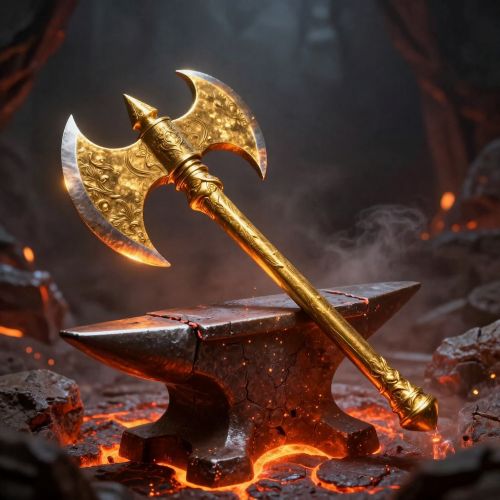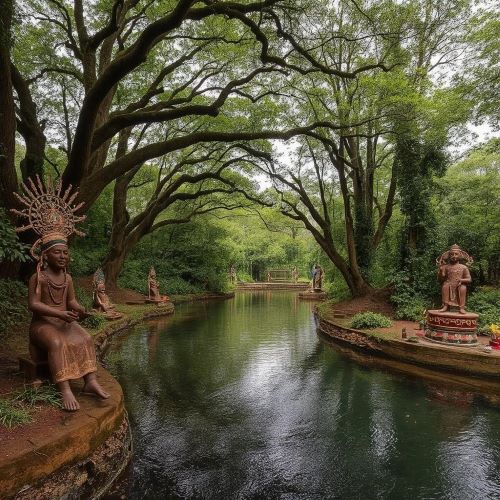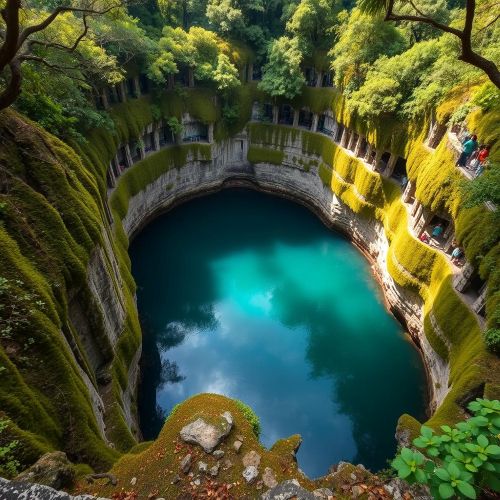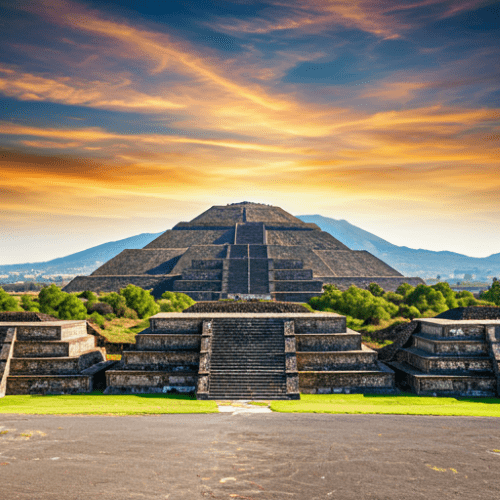Ouidah : The Sacred Crossroads
At a glance
| Description | |
|---|---|
| Mythology | Vodun Mythology |
| Country | Benin |
| Closest airport | Cotonou Cadjehoun Airport (COO) |
| Type | Natural |
| Accessibility | 10/10 |
Introduction
Ouidah, a coastal city in southern Benin, stands as one of West Africa’s most spiritually and historically significant destinations. Known as the birthplace of Vodun, or traditional West African Voodoo, Ouidah embodies the living fusion of myth, religion, and history. Once a major slave-trading port during the 17th to 19th centuries, it is now a symbol of remembrance, resilience, and cultural revival. Here, ancient rituals are performed beneath sacred trees, masked dancers invoke ancestral spirits, and the ocean breeze carries centuries of stories—from the divine to the tragic. Ouidah’s allure lies not only in its past but in the way it continues to thrive as a modern center of faith and identity, drawing pilgrims, historians, and travelers from around the world.
Connection with Mythology
Vodun is at the heart of Ouidah’s identity. The word “Vodun” means “spirit” in the Fon and Ewe languages, and in Ouidah it refers to a sophisticated cosmology that connects humans to the forces of nature, ancestors, and divine beings. Unlike the Westernized notion of “Voodoo,” Vodun here is neither dark nor superstitious—it is an ancient spiritual system that governs harmony, justice, fertility, and healing.
Central to Ouidah’s Vodun belief is the supreme creator Nana Buluku, the primordial being who gave birth to the twin deities Mawu and Lisa. Together, Mawu (the moon, peace, fertility) and Lisa (the sun, energy, strength) created the world and a host of divine offspring governing different aspects of nature—Sakpata (earth and disease), Agbe (sea), Gu (war and craftsmanship), and Legba (messenger between worlds).
Legba, whose shrine is often found at crossroads, plays a vital role in Vodun ceremonies, serving as the mediator through whom communication with the other spirits must pass. In Ouidah, Mami Wata, the goddess of rivers and beauty, and Dan, the python deity symbolizing life force and balance, are also deeply revered. Every ritual, offering, and festival in Ouidah echoes this sacred mythology, blending oral traditions with living spirituality.
Ways to Get There
Ouidah is located about 40 kilometers west of Cotonou, Benin’s largest city, and is easily accessible by road. Most visitors arrive through Cotonou Cadjehoun International Airport (COO), which connects to major African and European cities. From the airport, taxis or minibuses frequently travel the coastal route to Ouidah, taking roughly an hour depending on traffic.
For travelers coming from Porto-Novo or Lomé (Togo), Ouidah lies conveniently along the coastal highway that links the two capitals. The drive offers scenic views of coconut-lined beaches, traditional fishing villages, and glimpses of rural Benin life. Within the city itself, local transport is dominated by zemidjans, or motorcycle taxis, which are inexpensive and efficient for exploring Ouidah’s cultural and historical landmarks.
What to Look For
Ouidah offers a wealth of spiritual and historical attractions that together paint a vivid portrait of West Africa’s past and present.
The Temple of Pythons is one of the most iconic sites. Dedicated to Dangbé, the serpent deity, it houses dozens of sacred pythons that freely roam within the temple. Locals believe these pythons bring blessings and protection. The temple serves as a symbol of the deep respect Vodun holds for nature and animal life.
Nearby lies the Sacred Forest of Kpassè, a serene sanctuary filled with monumental sculptures of Vodun gods and ancestral figures. The forest is said to be the final resting place of King Kpassè, Ouidah’s first ruler, who transformed into a tree to escape his enemies. Each statue within the forest represents a divine or spiritual concept—from Zangbeto, guardian of the night, to Shango, god of thunder. Visitors often describe the atmosphere here as otherworldly, where myth and nature merge seamlessly.
The Ouidah Museum of History, located in the old Portuguese Fort of São João Baptista de Ajudá, chronicles the region’s past—from the Kingdom of Xwéda and the rise of Dahomey to the harrowing realities of the slave trade. Its exhibitions trace how Vodun and local culture survived through centuries of colonialism and displacement.
Perhaps the most powerful experience in Ouidah is walking the Slave Route (Route des Esclaves). This 3.5-kilometer path retraces the final steps of enslaved Africans taken from the auction squares to the Atlantic shore. The route passes several haunting landmarks—the Tree of Oblivion, where captives were forced to walk in circles to forget their origins; Casa Zomaï, where they were held in confinement; and finally, the Door of No Return, a seafront memorial arch that marks the point of departure toward the Americas. Standing before the ocean, many visitors describe a profound emotional and spiritual reckoning.
Importance in cultural history
Ouidah occupies a central place in the history of both Africa and the African diaspora. Between the 17th and 19th centuries, it was one of the most active slave-trading ports on the continent, exporting over a million men, women, and children across the Atlantic. Yet from this suffering emerged a remarkable legacy of survival and transformation.
The enslaved carried their Vodun faith across oceans, adapting it in new lands where it evolved into Haitian Vodou, Cuban Santería, and Brazilian Candomblé. These religions retain clear spiritual and ritual parallels to the traditions still practiced in Ouidah today. Thus, the city stands not only as a historical site but as a spiritual epicenter linking Africa to its diaspora—a place where faith, memory, and identity converge.
Ouidah is also recognized as the cultural capital of Vodun within Benin, where the religion is officially acknowledged and widely practiced. Roughly 40% of Benin’s population identifies with Vodun, and Ouidah remains its heart. The city hosts the International Vodun Festival and other cultural gatherings that celebrate African heritage, promote interfaith understanding, and preserve traditional art forms such as drumming, mask-making, and dance. Through these efforts, Ouidah continues to affirm its role as a living archive of African spirituality and resilience.
Best time to travel
The most enchanting time to visit Ouidah is in early January, when the city celebrates the Fête du Vodoun, or Vodun Festival. Held annually on January 10th, this national holiday transforms Ouidah into a vibrant stage of spiritual expression. Thousands of devotees, priests, and tourists gather from across Benin, Haiti, Brazil, and the Caribbean to witness ceremonies honoring the gods and ancestors.
During the festival, the streets overflow with color, rhythm, and reverence. Masked dancers spin to the beat of traditional drums, sacrifices and offerings are made at shrines, and the city’s beaches host spectacular ritual performances that connect the living and the divine. It’s an immersive celebration that captures the essence of Vodun—balance between the seen and unseen, the human and the spirit.
Outside the festival season, the best time to travel to Ouidah is during the dry season (November to March), when the weather is warm and pleasant, and roads are easily navigable. The rainy season (April to October) can make travel challenging, though it also brings lush greenery that enhances the beauty of the Sacred Forest and surrounding countryside.
Source
Undiscovered Destinations. (2025, August 5). A traveler’s guide to the enchanting Benin Voodoo festival. Retrieved from https://undiscovered-destinations.com/blog/benin-voodoo-festival-travel-guide/
Outlook Traveller. (2020, January 7). Revel with the ancients at the Ouidah Voodoo Festival in January 2020. Retrieved from https://www.outlooktraveller.com/News/revel-with-the-ancients-at-the-ouidah-voodoo-festival-in-january-2020
The African Hobo. (2019, January 21). Pythons and voodoo: The spiritual capital of Benin Republic, Ouidah. Retrieved from https://theafricanhobo.wordpress.com/2019/01/22/pythons-and-voodoo-the-spiritual-capital-of-benin-republic-ouidah/
Hoblets on the Go. (2025, January 25). Benin: Ouidah – Our Voodoo festival experience. Retrieved from https://hobletsonthego.com/where-weve-been/africa/benin/ouidah-voodoo-festival/
Responsible Travel. (n.d.). Ouidah voodoo festival in Benin. Retrieved from https://www.responsibletravel.com/holidays/festivals/travel-guide/voodoo-festival-benin
Frequently Asked Questions
Lorem ipsum dolor sit amet, consectetur adipiscing?
Lorem ipsum dolor sit amet, consectetur adipiscing elit. Praesent convallis vestibulum justo, ac tincidunt nunc vehicula quis. Nullam id dolor quis orci malesuada feugiat. Curabitur aliquet libero at urna ullamcorper, ac ultricies nulla dapibus.
Lorem ipsum dolor sit amet, consectetur adipiscing?
Lorem ipsum dolor sit amet, consectetur adipiscing elit. Praesent convallis vestibulum justo, ac tincidunt nunc vehicula quis. Nullam id dolor quis orci malesuada feugiat. Curabitur aliquet libero at urna ullamcorper, ac ultricies nulla dapibus.
Lorem ipsum dolor sit amet, consectetur adipiscing?
Lorem ipsum dolor sit amet, consectetur adipiscing elit. Praesent convallis vestibulum justo, ac tincidunt nunc vehicula quis. Nullam id dolor quis orci malesuada feugiat. Curabitur aliquet libero at urna ullamcorper, ac ultricies nulla dapibus.
Lorem ipsum dolor sit amet, consectetur adipiscing?
Lorem ipsum dolor sit amet, consectetur adipiscing elit. Praesent convallis vestibulum justo, ac tincidunt nunc vehicula quis. Nullam id dolor quis orci malesuada feugiat. Curabitur aliquet libero at urna ullamcorper, ac ultricies nulla dapibus.
Lorem ipsum dolor sit amet, consectetur adipiscing?
Lorem ipsum dolor sit amet, consectetur adipiscing elit. Praesent convallis vestibulum justo, ac tincidunt nunc vehicula quis. Nullam id dolor quis orci malesuada feugiat. Curabitur aliquet libero at urna ullamcorper, ac ultricies nulla dapibus.









